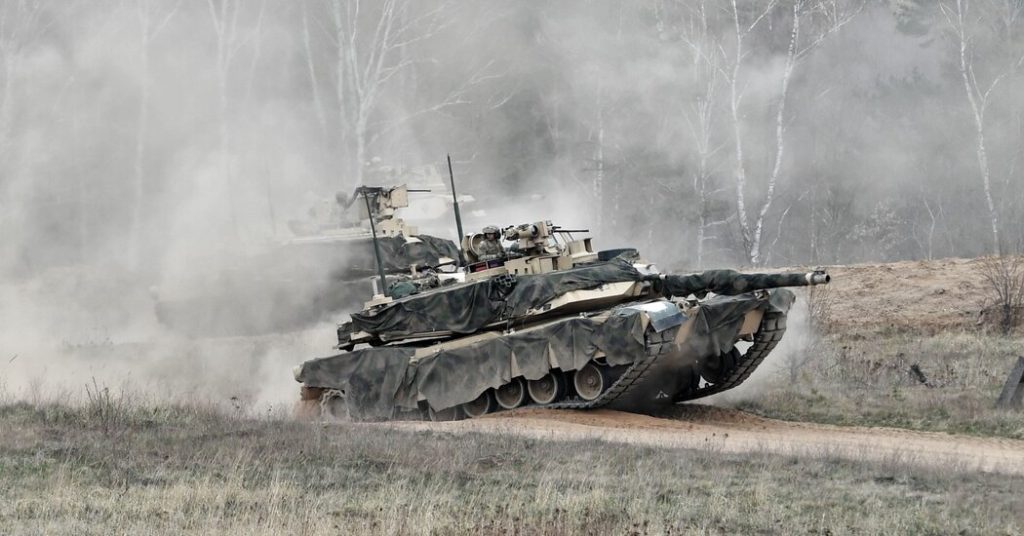The conflict in Ukraine involving drone combat has resulted in a significant number of American-made M1 Abrams tanks being taken out by Russian forces. This development is reshaping modern warfare by showing that even powerful tanks are vulnerable to low-cost, highly accurate drones. The drones used, called first-person view drones (FPVs), are equipped with cameras that enable them to target tanks in their most vulnerable spots. These drones can be used to “finish off” tanks that have already been damaged, preventing them from being retrieved and repaired. This method has proven to be effective and has caught some experts by surprise.
Tanks are not impenetrable, and they are most vulnerable in areas with thinner armor. While tanks were traditionally targeted with land mines, rocket-propelled grenades, and anti-tank guided missiles, drones have emerged as a new threat due to their precision and ability to stream real-time images back to the controller. These drones can cost as little as $500, making them a cost-effective way to take out expensive tanks like the M1 Abrams, which costs around $10 million each. The use of drones in this way represents a major shift in modern warfare tactics.
Various methods have been proposed to defend against FPVs, including electronic warfare, passive protection such as additional armor, and the use of jammers to disrupt the connection between the drone and its pilot. However, the effectiveness of these defenses varies, and some experts believe that a tailored approach is needed on the battlefield. While some militaries are testing laser beams that could destroy drones, countermeasures are likely to be developed to neutralize these defenses. The ongoing conflict in Ukraine highlights the need for new strategies to counter evolving threats in modern warfare.
The effectiveness of FPVs in targeting tanks has raised questions about the future role of tanks in warfare. While some experts believe that tanks remain essential for seizing terrain and are not rendered obsolete by drones, others see a shift towards underground warfare with remote-controlled weapons. In this scenario, soldiers could direct weapon systems from underground bunkers to maintain lines of sight and communication. This type of warfare could involve drones and unmanned ground vehicles fighting each other, leading to a new era of warfare that resembles science fiction scenarios like “The Terminator.”
The conflict in Ukraine has also underscored the urgent need for air defenses, with President Zelensky calling on the West to provide more support. The U.S. House of Representatives is set to vote on a $61 billion aid package for Ukraine, which includes weapons and equipment. Other allies, such as Germany, are also working to support Ukraine and fill critical defense gaps. The evolving tactics and technologies in modern warfare require constant adaptation and innovation to stay ahead of emerging threats and challenges. As the conflict in Ukraine continues to unfold, it serves as a stark reminder of the rapidly changing nature of warfare in the 21st century.


